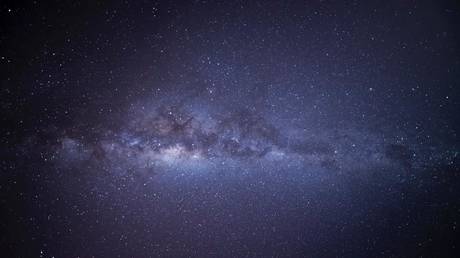
Spanish astronomers say they have completed the most accurate picture yet of the Milky Way and have discovered a huge new hidden structure made up of massive blue stars spanning 10,000 light-years.
Astronomers had already known that the Milky Way consists of great spiral arms of stars, but the scientists from Spain’s Centro de Astrobiología (CAB) put together the most detailed map yet of the Orion arm, where our solar system is, along with those of Perseus at the outer edge of the Milky Way, and Sagittarius, located towards the center of our galaxy.
They were able to detect the previously unknown region of our galaxy through observations form the European space Agency’s Gaia telescope and called it “the Cepheus spur.”
“The moment of discovery of the spur was curious,” Michelangelo Panteleoni Gonzalez, a lead researcher at CAB, told Spanish newspaper El Pais. “It wasn’t an explosive revelation, but there was something inside me that was transformed. It is what hooks you and what gives meaning to so much effort.”
He and colleague Jesus Maiz Apellaniz have published their findings in a paper to the Royal Astronomical Society.
They say it is a bridge of massive blue stars that spans a branch 10,000 light years in length, exits the spiral arm of Orion and connects to Perseus.
The study says the spur is a compact structure of stars that appears to have consistent motion and is located about 300 light years high above the midplane of the galaxy. Astronomers looking at other galaxies had observed similar height consistencies, but the pair’s discovery is the first time that it has been confirmed in our home galaxy.
“In the galactic map that we have drawn… an over-density of stars is observed in a space that was previously apparently empty,” said Panteleoni.
Blue stars are the largest, rarest and hottest stars in the galaxy. Of the estimated 400 billion stars in the Milky Way, less than one in a million is a blue star. While the surface of a star like the Sun is around 5,500 degrees Celsius, the temperatures on blue stars exceed 30,000C and are tens of times their mass.
Apellaniz and Pantaleoni said the blue stars are the most interesting objects in the universe because the nuclear reactions that occur inside them are particularly violent, making them factories where the largest elements in the universe are created.
“The elements that our planet is made of, such as silicon or phosphorous atoms in our DNA, mostly come from inside stars of this type that died billions of years ago,” Pantaleoni added.
If you like this story, share it with a friend!




